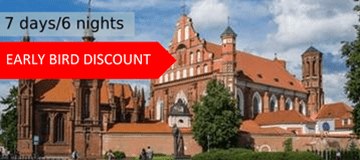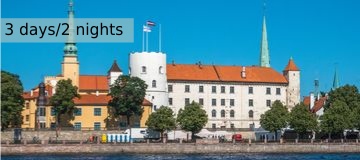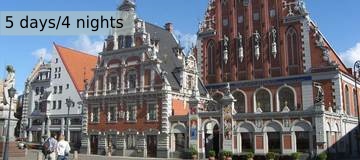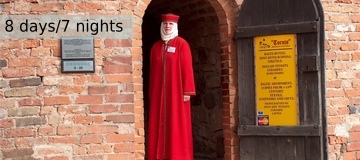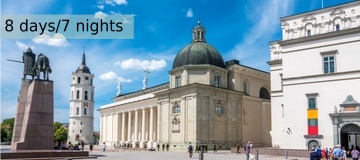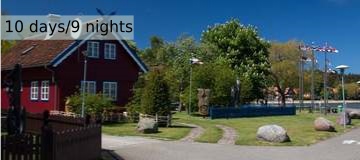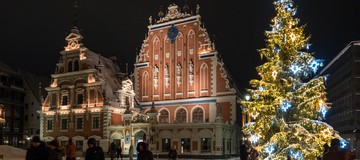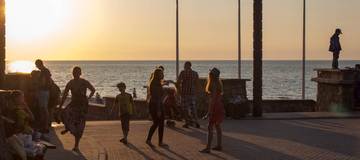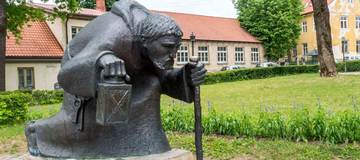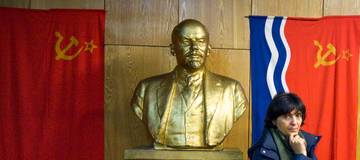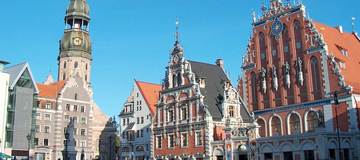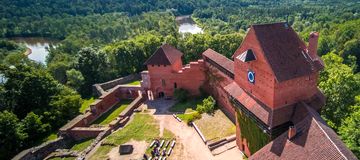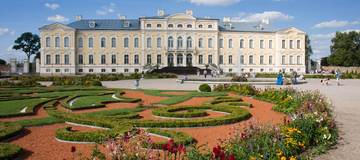Tours in Latvia
Latvia is an ancient country some 3000 years old, but it was only in 1201 that the capital Riga appeared. Riga was founded by the Teutonic Knights of the Sword. From 1201 up until World War I, Latvia was under foreign a rule of Germans, Swedes, Poles, and Russians. The predominant influences were Russian and German, with a 90 year interlude under King Gustavus Adolfus of Sweden, which ended when Peter the Great defeated him in 1701. At the end of World War I, Latvia finally emerged as an independent national state. It lasted only two decades. At the outbreak of World War II, Latvia was forcefully annexed by Stalin. With the collapse of the Soviet Union, Latvia regained its independence in August 1991.Everything about Latvia is a contrast. You can have a holiday by the beach and 30 minutes later be wandering through a World Heritage-listed Riga's Old Town that can be explored for hours. In the former Zeppelin Hangers, which are now the city's famous Central Markets, you can interact with the locals on a search for the best pickles, cheeses and fruit. After exploring the city, you can take a walk through the lake and forest region, and visit an ethnographical museum that will make think you've stepped back a century or two. You can search for the Baltic treasure - amber, or learn of the people's struggle for independence under numerous occupiers. Latvia has it all.
Riga, the capital, has population of almost a million. It is a busy port and a cosmopolitan city with a well-preserved, fascinating Old Town. It offers a rich architectural setting ranging from medieval gabled homes and storehouses built by Hansa merchants to exquisite 19th to the beginning of 20th century Art Nouveau buildings. Set among trees by the lake, in the suburbs of Riga, is the Open-Air Ethnographic Museum with over one hundred wooden buildings.
During the recent years, Riga has developed better tourist services including new air connections which have drawn attention of British, German and Scandinavian tourists. Visitors of different age explore Latvia’s capital attractions, enjoy numerous restaurants and bars, and visit Riga’s Opera which is one of the most famous in the region especially during the opera festival held in June every year.
Close to Riga is Jurmala, Latvia's Riviera-like resort with long beaches, attractive wooden villas, spas and therapeutic facilities.
A visitor shouldn’t miss the historic towns of Cesis and Sigulda with their medieval castles, alongside the pleasant banks of Gauja river while traveling through Gauja National Park.
The 18th century Rundale Palace not far from Latvian – Lithuanian border is considered to be the most impressive Baroque building in Latvia. It was the summer residence of the Duke of Courland. The museum located there now offers baroque themed event programs that can be booked or added to your incentive program at ELIT Events Baltic.
The South Western Latvia, Kurzeme area is still mostly unknown to tourists although there is a large number of old manors and castles, and the lovely town of Kuldiga with almost completely conserved 19th century Old Town and the 2nd widest waterfall in Europe (although only 2 meters high).
The highlight of the area is the port of Ventspils - a town with long history that features nice old town, Livonian Order castle, lovely street art and a maritime museum with enormous collection of anchors and many other aquatic items.
Another port - Liepaja attracts visitors with 19th to beginning of 20th century villas and reminders of the Soviet times when the city was the major Soviet Naval Base on the Baltic Sea. Thrilling views of the base called Karuosta in Latvian will definitely impress everyone.
See below our tours in Latvia or Baltic tour packages that include Latvia. Get ready to travel to Latvia and discover this hidden gem of Northern Europe.
And if you will enjoy jour guide services you can send to him or her flowers to Latvia









